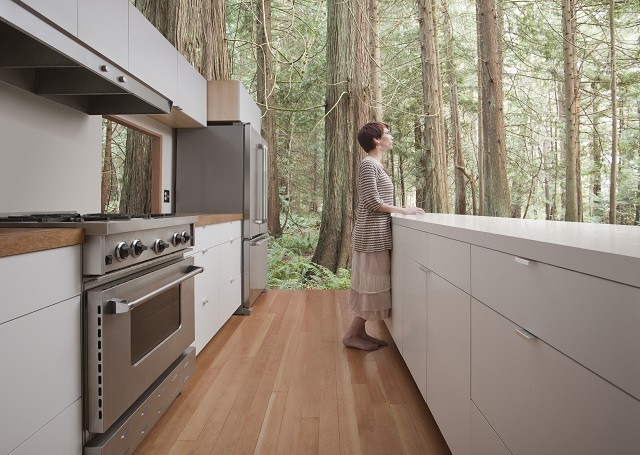 More people are talking about sustainable housing as the changes in our environment become clearer.
More people are talking about sustainable housing as the changes in our environment become clearer.
What is a Sustainable House?
In short, sustainable housing is simply a house that is built with recycled or eco friendly materials and habits in mind.
This includes the actual materials used to construct the house and the way that the materials are transported to the building site. It also means the functionality of the materials in the house; and the way that the people who own the house live on a day-to-day basis.
A home that is completely eco-friendly is defined as LEED (Leadership in Energy and Environmental Design) certified. This means that your home has been proven to be environmentally friendly and has been built with regards to human health. Being LEED certified increases the value of a home, because green houses are in such high demand.
What Makes Sustainable Homes Important?
Green housing is important for the same reasons that avoiding single-use plastics and carpooling are important.
Every year, humans produce increasing amounts of waste from single-use products such as Styrofoam cups. The effects of this on the environment have been literally piling up in our oceans, beaches and public spaces.
The purpose of this type of housing is:
- To reduce the amount of waste that is going into our landfills
- To reduce the amount of emissions and energy consumption that humans emit every day
Sustainable houses are built with these two things in mind, which is why many of them have special designs and different appliances than “normal” houses do.
Materials from home-renovation projects take up more than 30 percent of the waste in a landfill. Green homes aim to decrease that number dramatically by re-purposing materials to be used in the new construction. For items that cannot be reused, there are eco-friendly ways to dispose of debris.
What Makes Green Homes Sustainable?
Many eco-homes are built with composting toilets, or vegetable gardens that use grey water to irrigate.
They also have many energy conservation tactics; making it possible to create the same amount of energy through solar panels or wind turbines as the home owners are using in the same day.
The homes are also built with extra insulation so that they use less energy to heat during the winter months and can be cooler during warmer times of the year. This allows the home to regulate temperature better than typical homes.
Eco-homes also have large windows so that they can take advantage of natural lighting. This provides a good source of both heat and light, reducing the need for electricity even more.
Eco-Friendly Remodeling on a Budget
There are various things that a homeowner can do to make their existing home more sustainable. Green remodeling saves time and money spent on a total renovation and is still a big improvement for the Earth and your pocket.
- Installing LED lights – they are more energy-efficient
- Use less water – take shorter showers, turn the sink off when you aren’t using it
- Do larger loads of laundry
- Unplug appliances & electronics that aren’t being used
- Compost food scraps and other compostable items
- Recycle items instead of throwing everything in the trash
Another way to create a home that is more eco-friendly is by adding energy efficient appliances and items. By adding new washers, dryers, toilets, windows or insulation materials that are conscious of the environmental impacts they have, you can make your home greener without completely rebuilding. To ensure that these appliances are green, make sure that they are Energy Star certified products.
Costs of Building a Green Home
The cost of these homes varies depending on what the specific homeowner wants. They can be very expensive, or they can be built relatively cheaply. However, research has shown that in the long run, a green home will save money and resources over time because of the reduced cost of energy used.
Every home is different, with each owner’s unique taste visible within the design of the home. However, here are some staple items that will take your eco-home to the next level:
- LEED certified homes can add to the property value of the home. They also are certified to be as energy-efficient as possible, which means that they are cheaper to maintain.
- Recycled glass counters – these can be made of entirely recycled glass and concrete, which keeps from using petroleum-based granite countertops but also keeps glass out of oceans and landfills
- Solar panels cost – an average of $16,000-$30,500 can be used to generate electricity that will either offset the amount used or even create a surplus, leaving the electricity bill either at no cost or a minimum. Although solar panels can be expensive, they will ultimately save money
- Cotton insulation – comprised of almost entirely recycled cotton products, including jean material, this insulation is just as good as fiberglass and much more eco-friendly
- Eco-friendly paint – a natural-based option to traditional paints which use formaldehyde and other toxic chemicals
- Install double-pane windows to further insulate your home and reduce costs of heating and cooling. The cost of double-pane windows ranges from $175-$800.
- Large windows and skylights – allows for natural lighting which reduces the need for artificial light – keeping electricity use and costs to a minimum during daytime hours
- Thrifted furniture – people throw or give away perfectly good furniture all the time, and with a furniture repair expert to help, these pieces can be good as new – and a cheaper alternative to new!
- Bamboo flooring cost – average per square foot is $4.00. an alternative to traditional wood flooring; bamboo grows much quicker than other woods and is therefore cheaper and doesn’t contribute to growing deforestation concerns
All of these items can help with reducing the impact that building a home can have on the environment.
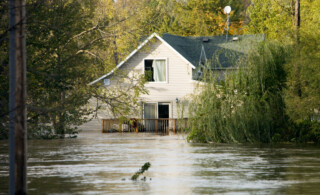 Five Home Projects to Address Immediately After Your House Has Flooded
Five Home Projects to Address Immediately After Your House Has Flooded 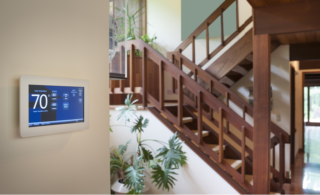 How to Choose the Best Smart Thermostat for Your Home
How to Choose the Best Smart Thermostat for Your Home 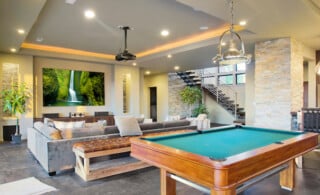 Why So Many Millennial Homeowners Are Remodeling Their Basements
Why So Many Millennial Homeowners Are Remodeling Their Basements 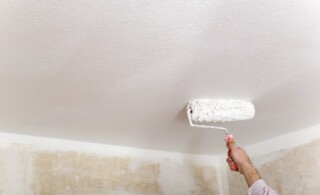 How to Paint Popcorn & Textured Ceilings
How to Paint Popcorn & Textured Ceilings 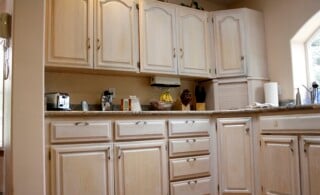 Cheap Kitchen Cabinet Buying & Installation Guide: Best Affordable Options
Cheap Kitchen Cabinet Buying & Installation Guide: Best Affordable Options 

Are You Familiar With This Topic? Share Your Experience.